NVIDIA Tegra Note 7 Review
by Brian Klug on November 12, 2013 9:01 AM EST- Posted in
- Tablets
- Mobile
- Tegra 4
- NVIDIA
- Tegra Note
NVIDIA is launching Tegra Note running “100% stock” Android 4.2.2. The UI is essentially stock, although there are obviously additional items inside the settings menu which are Tegra Note specific, and of course the changes to accommodate Tegra Note’s built in stylus.
Like Shield, NVIDIA is responsible for timely OTA updates to Tegra Note, and although the tablet is launching running 4.2.2, you’ll basically get updates in step with the Tegra 4 BSP. There’s a few things missing from this version of the software we’re looking at right now that will make it into the final image in the December timeframe with Android 4.3, including always on HDR for the camera, and hopefully moving apps to SD card.
The customizations that NVIDIA has made to the Android platform primarily focus around compatibility with the custom stylus solution that lends Tegra Note its namesake. NVIDIA has coined it DirectStylus, and really it’s an evolution of DirectTouch, which offloads the touch controller processing after analog to digital conversion onto the shadow core onboard Tegra 4.
NVIDIA claims DirectStylus offers much the same feature set as an active digitizer at a fraction of the implementation cost. Instead of using an additional layer in the touch panel and a special stylus, this works with a normal capacitive stylus and digitizer. NVIDIA is being tight lipped about just how they’re sampling the display to enable detection of the two different stylus tips, but it does work.
The implementation supports almost everything you’d expect from an active stylus, including palm rejection, pressure sensitivity, orientation sensitive tips (like the chisel tip), and very fine control. The only obvious omission is hover support, which active systems still seem to have a leg up with. The real differentiator for the Tegra Note however is that it delivers almost all of the experience critical for note taking, drawing, or annotating documents at a fraction of the cost. I played around with DirectStylus inking on the Tegra Note and didn’t notice any problems, if you didn’t know better you could easily mistake the experience for one afforded by a much more expensive active solution, and at the same time this solution seems to have lower latency. NVIDIA claims 3x lower latency versus a Galaxy Note 8, and although I haven’t used one directly, inking lags behind my pen tip considerably less than I remember it lagging with the Galaxy Note 10.1 (2013) or Note 3, although those aren’t direct competitors. Palm rejection works well on the Tegra Note 7 as well, something I expected would be problematic given the shared capacitive sensing.
Tegra Note comes with a chisel tip stylus, although there’s also a fine point tip available. The stylus feels surprisingly nicely weighted, solid, and comfortable to use. I had limited success using the Tegra Note with the only other capacitive stylus I have available from the HTC One max, but NVIDIA claims it will indeed work with other popular capacitive styli.
The Tegra Note comes preloaded with two inking related applications out of the box, Tegra Draw, and Write. The first is self explanatory, it’s a simple drawing app with a color picker, a variety of available software tip types, and the ability to save to a final image. The Write application is a more fleshed out note taking app with basic organization support. What’s missing is the kind of comprehensive writing to text conversion that other devices which include inking support have, or the third party keyboard that takes advantage of inking.
When the stylus is withdrawn from its holder, at the bottom are two additional buttons. One allows you to lock out other capacitive inputs and put the Tegra Note in a pen-only mode, the other is a lasso like snipping and annotation mode which lets you grab anything on screen.
Although others have more fleshed out software support, NVIDIA has nailed what I’d consider the baseline set of features necessary for a product which emphasizes its note abilities. If taking notes or drawing is a priority, the Tegra Note’s value prospect is immediately obvious compared to some of the more expensive devices with active digitizers.
It’s also worth noting that Tegra Note includes support for console mode and the same level of bluetooth third party controller support that Shield brought. What’s absent however is GameStream compatibility, since Tegra Note lacks 5 GHz WiFi.


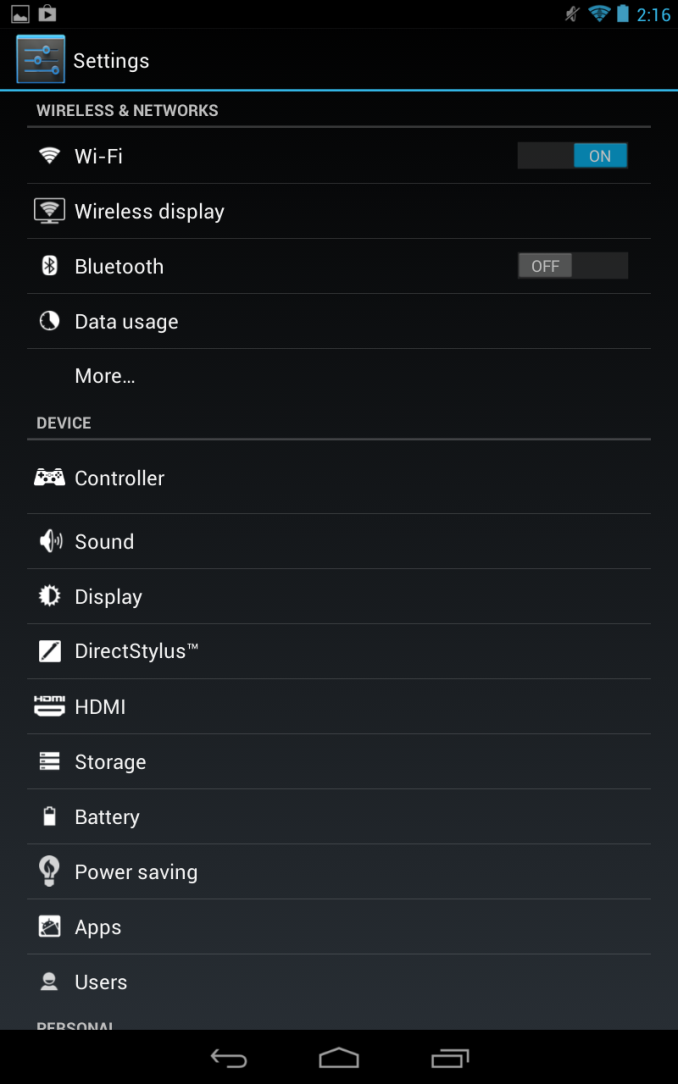
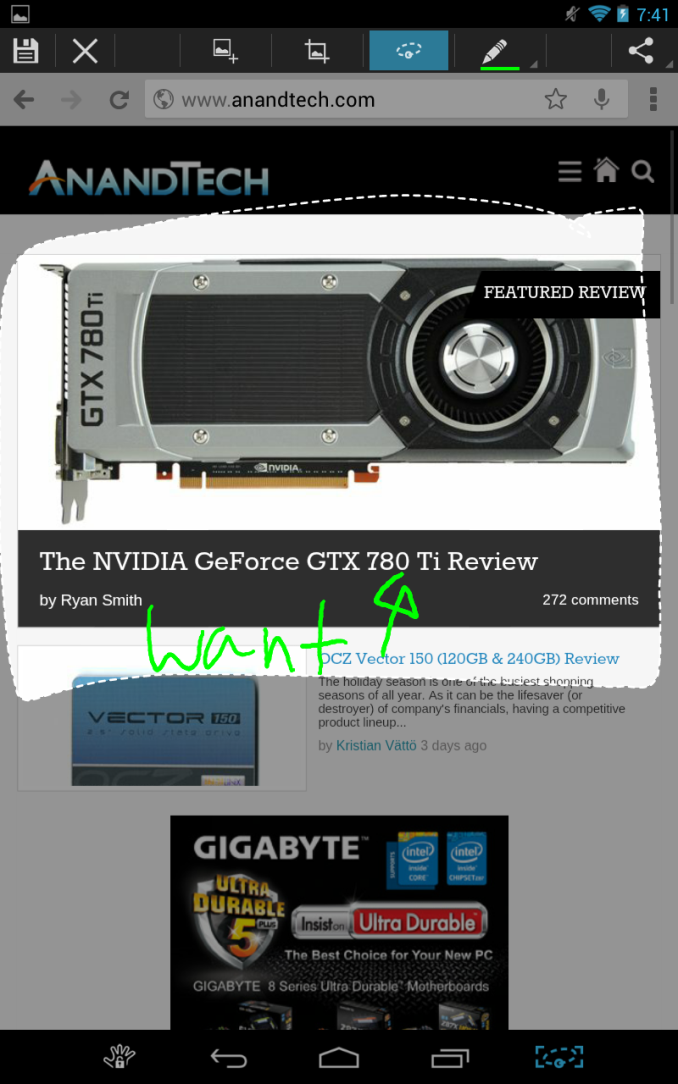


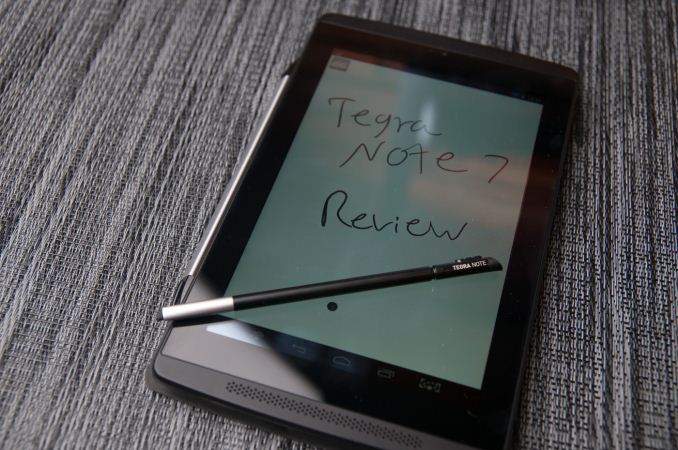
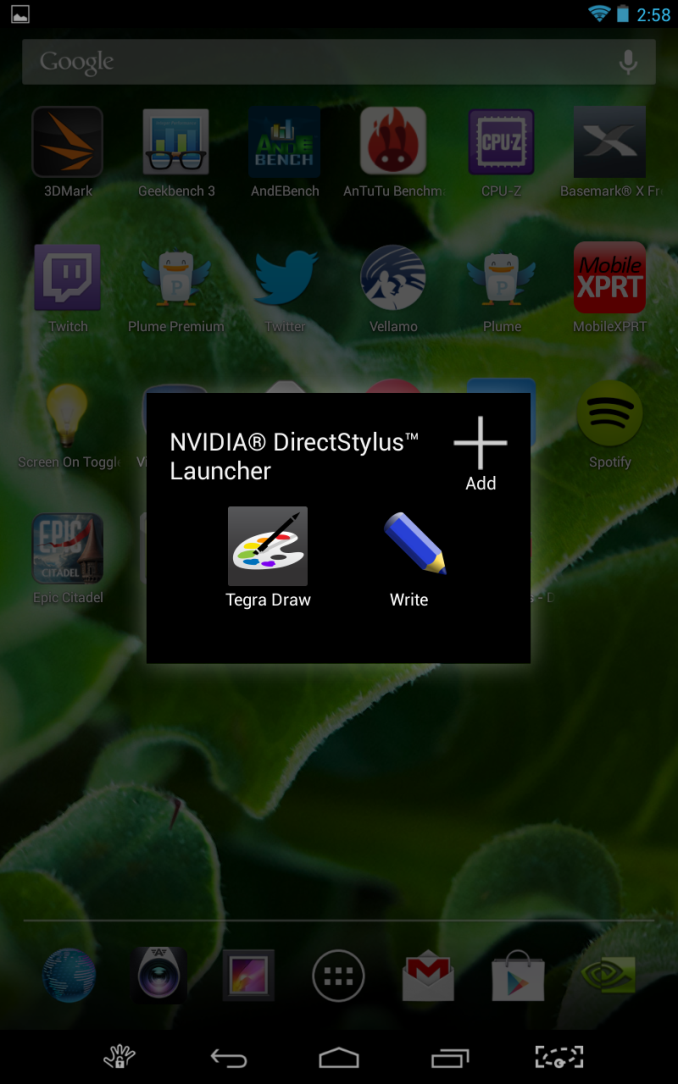
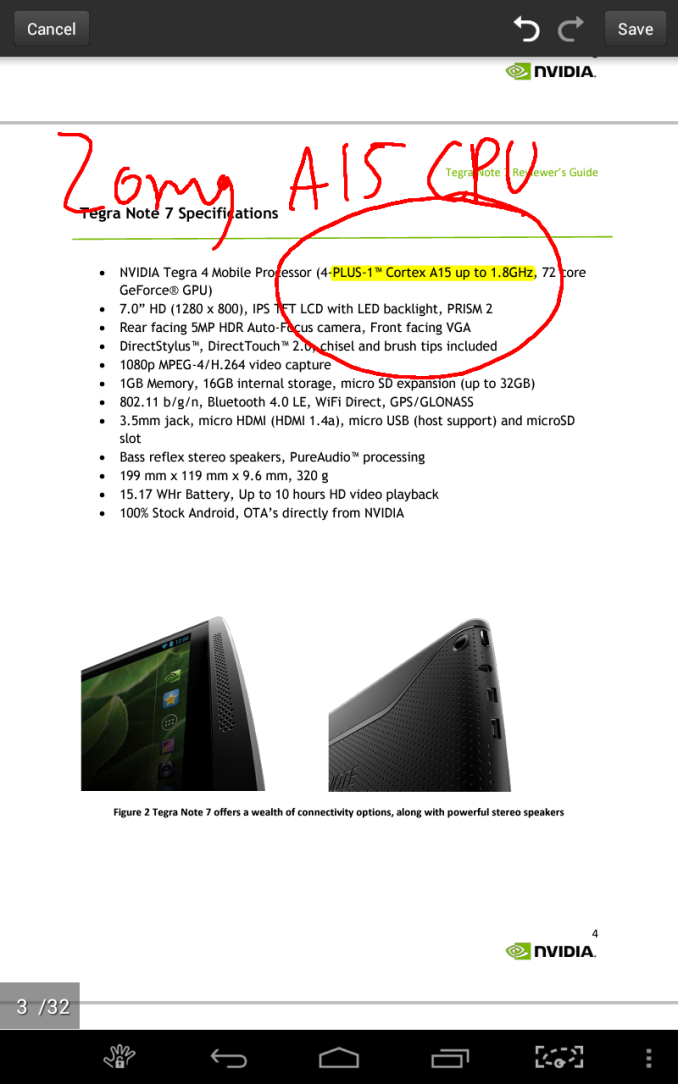

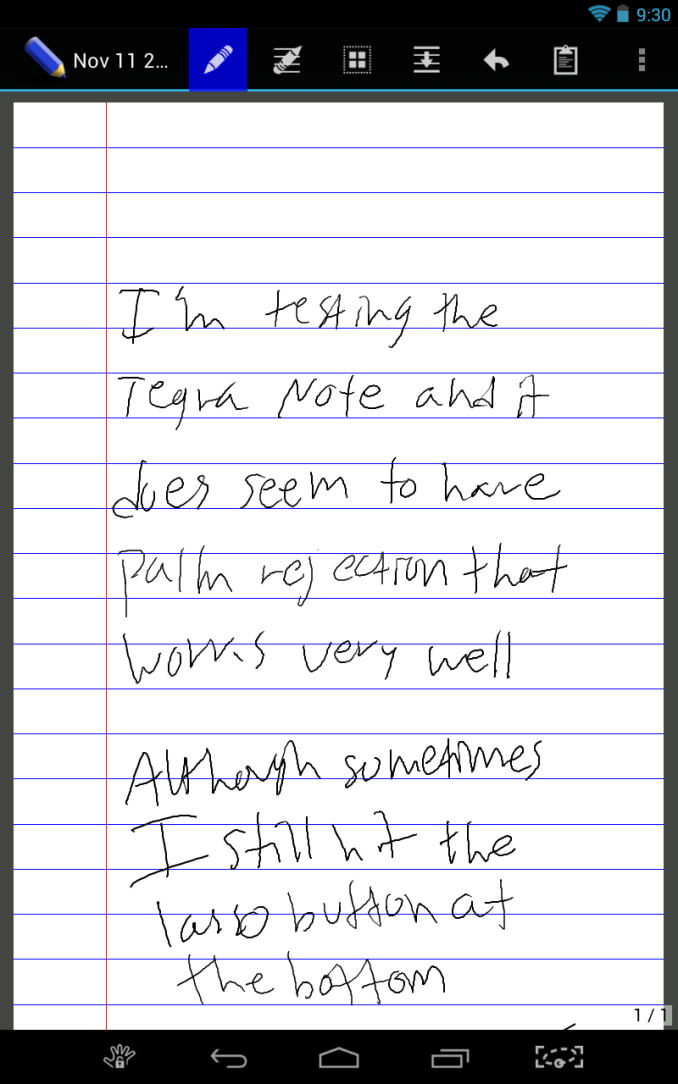








87 Comments
View All Comments
Morawka - Tuesday, November 12, 2013 - link
arent those yoga 2's $1500ddriver - Tuesday, November 12, 2013 - link
And if you are really serious - use pen and paper. And if the environmental impact is a major factor - scan, ocr and recycle the paper ;)Nothing beats pen and paper, and especially not a glossy screen. It is mighty inconvenient to use a stylus on a glossy surface, it is just too damn slippery and does not have the nice grip of paper. I am looking to get some kind of a matte screen protector for my note 3, the pen feels much, much better on a matte surface, tested on my dell monitor, much more grip and much better control over the tip.
zodiacsoulmate - Tuesday, November 12, 2013 - link
I use surface pro and it completely replaced paper(even math assignments). when i print the solution out, it looks the same as i wrote it on paper but cleaner.Krysto - Tuesday, November 12, 2013 - link
What's wrong with the Note? Surface Pro also comes twice as much, and feels twice as heavy. That being said, I'd rather wait for Galaxy Note 12.2 if I was an artist.frostyfiredude - Tuesday, November 12, 2013 - link
I've got a Pro 2. Couple things I can think of for getting a Surface Pro(2) over a Note:-I've yet to see a program that handles notes as well as OneNote does. The syncing, cross platform support, pressure sensitivity, drawing tools and little things like the print driver together are awesome.
-Slightly bigger screen makes notes more comfortable, I find the Pro 2 to be barely big enough so even being 10% or so smaller the Note 10.1 will feel notably less comfortable to work with.
-Looking at videos online, palm rejection is clearly better implemented with the Surface (Microsoft nailed this). This is a big deal for making the note taking process feel comfortable and natural.
An artist has even more reason to go Pro, with all the powerful tools like Adobe CS, Corel's painting programs and their add ons. Android's tools are a massive compromise in comparison, the couple artists I know have been less than satisfied with their run-ins with the Android options thus far.
fbales - Sunday, December 1, 2013 - link
Disagree. Sorry, but for less than 200 bucks it is not hands down for a Surface Pro 2. Not saying it's not a better tablet, what I'm saying this Tegra Note 7 is pretty hard to beat for the price. And don't be put off by the screen resolution. It's the same as the first Nexus 7 which reviewers raved about. Certainly not the best, but still very good.GrzegorzWidla - Tuesday, November 12, 2013 - link
If stylus works that well, it baffles me why Microsoft has not brought that tech to Surface 2 RT.That would be a killer feature at half of Surface 2 Pro price. In fact, if Surface 2 had a active digitizer (or alternative technology that works well), I wouldn't need Pro at all.
BoneAT - Tuesday, November 12, 2013 - link
Performance and price point is nice, but everything else is underwhelming, especially the screen.I hoped for the Nexus 5 review haha, but I guess y'all waiting for tomorrow's update?
Wade_Jensen - Tuesday, November 12, 2013 - link
Has Brian lost his nexus 5 or something? I'm starting to think it must benchmark boost to keep him quiet that long.ISwearImCool - Saturday, November 16, 2013 - link
Or maybe, he really likes it. The HTC One review took like a month. He puts more time into things he likes. Compare HTC One vs S4